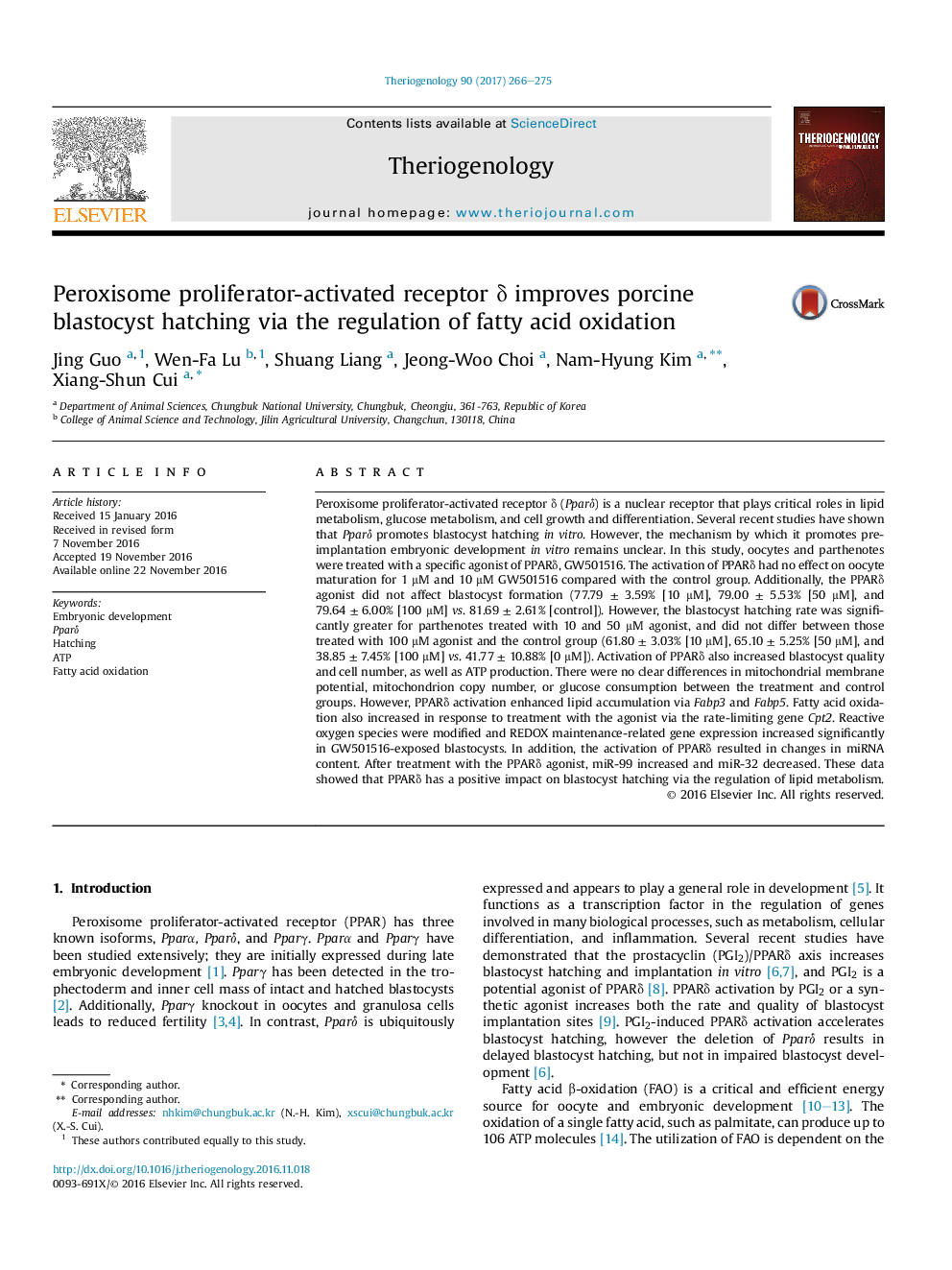| کد مقاله | کد نشریه | سال انتشار | مقاله انگلیسی | نسخه تمام متن |
|---|---|---|---|---|
| 5523145 | 1546079 | 2017 | 10 صفحه PDF | دانلود رایگان |

- Activation of PPARδ increased blastocyst hatching rate and blastocyst quality.
- The PPARδ can regulate the fatty acid oxidation resulting the increase of ATP production.
- Reactive oxygen species were modified and REDOX maintenance-related gene expression increased by the activation of PPARδ.
Peroxisome proliferator-activated receptor δ (Pparδ) is a nuclear receptor that plays critical roles in lipid metabolism, glucose metabolism, and cell growth and differentiation. Several recent studies have shown that Pparδ promotes blastocyst hatching in vitro. However, the mechanism by which it promotes preimplantation embryonic development in vitro remains unclear. In this study, oocytes and parthenotes were treated with a specific agonist of PPARδ, GW501516. The activation of PPARδ had no effect on oocyte maturation for 1 μM and 10 μM GW501516 compared with the control group. Additionally, the PPARδ agonist did not affect blastocyst formation (77.79 ± 3.59% [10 μM], 79.00 ± 5.53% [50 μM], and 79.64 ± 6.00% [100 μM] vs. 81.69 ± 2.61% [control]). However, the blastocyst hatching rate was significantly greater for parthenotes treated with 10 and 50 μM agonist, and did not differ between those treated with 100 μM agonist and the control group (61.80 ± 3.03% [10 μM], 65.10 ± 5.25% [50 μM], and 38.85 ± 7.45% [100 μM] vs. 41.77 ± 10.88% [0 μM]). Activation of PPARδ also increased blastocyst quality and cell number, as well as ATP production. There were no clear differences in mitochondrial membrane potential, mitochondrion copy number, or glucose consumption between the treatment and control groups. However, PPARδ activation enhanced lipid accumulation via Fabp3 and Fabp5. Fatty acid oxidation also increased in response to treatment with the agonist via the rate-limiting gene Cpt2. Reactive oxygen species were modified and REDOX maintenance-related gene expression increased significantly in GW501516-exposed blastocysts. In addition, the activation of PPARδ resulted in changes in miRNA content. After treatment with the PPARδ agonist, miR-99 increased and miR-32 decreased. These data showed that PPARδ has a positive impact on blastocyst hatching via the regulation of lipid metabolism.
Journal: Theriogenology - Volume 90, 1 March 2017, Pages 266-275